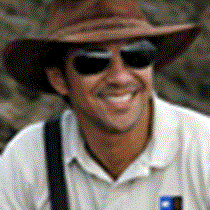After a calm crossing on the Drake Passage, we finally arrived to Antarctica! During the crossing, it was hard not to hear the comments and references on how Antarctica will be once we arrive. Today all speculations and rumors came to an end once we saw through our cabin windows the immaculate whiteness of the islands approaching. The South Shetland archipelago forms the northern rampart of Antarctica, and it is the first land most visitors see when approaching the Antarctic Peninsula. Our plans for our first landing on Antarctica were to visit Half Moon Island, a small crescent moon-shaped island located near the towering glaciated shores of Livingston Island.
Half Moon Island was the logical place to visit as a first landing due its richness in wildlife. The southern part of the island concentrates a population estimated at 3,300 pairs of nesting chinstrap penguins and several other species of birds, such as Antarctic terns, skuas, and kelp gulls.
Once we secured the landing, guests were able to land for the first time in Antarctica and enjoy observing the intricate life of the chinstrap penguin rookery located close to the shores.
For the more adventurous, a long hike was offered, so we headed up from the shores to the snowy, hilly slopes to conquer the highest possible area to observe the landscape surrounding us. We were treated by the view of humpback whales swimming and feeding peacefully in the proximities of the shoreline.
Once we reached the penguin colony at the end of the hike, we were rewarded by the overwhelming experience of penguins everywhere! Chinstrap penguins are one of the three species of penguins we will see during our Antarctica expedition, and we were delighted to have time enough to spend with them, observing their behavior and learning about their biology, as well as the important aspects of conservation needed to maintain these colonies safe from environmental threats.
An outstanding first day in a true paradise on Earth!







